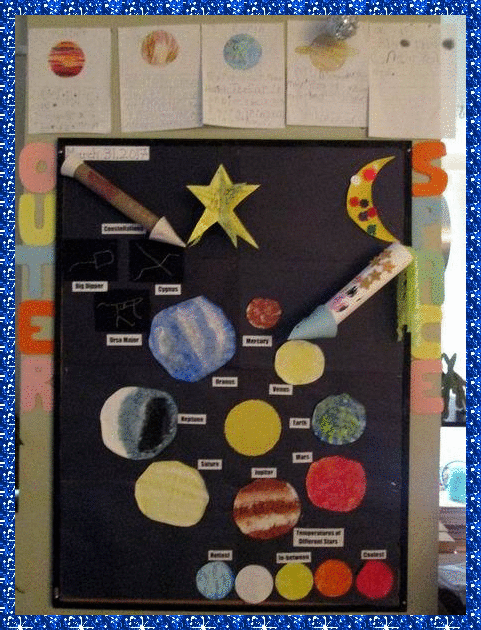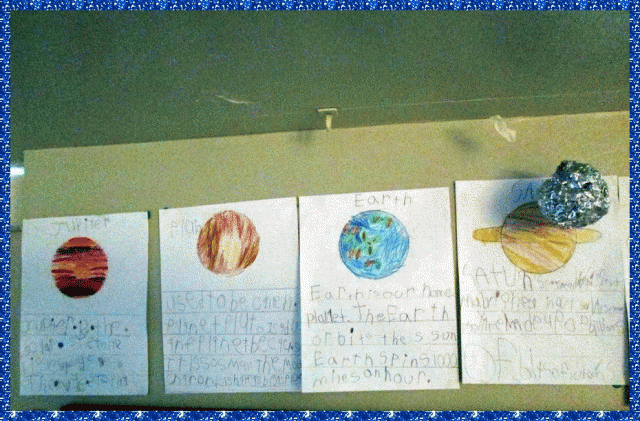The children have been very intrigued about space. Earth is our home and the sun is our star – it is the closest star to Earth. The sun is very hot, which allows our planet to be warm and the light from the sun keeps all living things alive. We discussed our moon. The moon orbits the earth just like the earth orbits the sun. We were very interested in learning about meteors and meteorites. There are many rocks that float around in space and they are called meteors. Most of the time, a meteor will burn up before reaching the ground and hitting the surface of the Earth. If a meteor hits the ground, it is called a meteorite. We talked about an asteroid belt, which is a ring of rocks (asteroids) that orbit the sun between mars and Jupiter. Thousands of rocks race around the sun in a ring called an asteroid belt. During our topic of space, we also learned about the dwarf planets, comets, universe, stars, constellations, galaxies, Milky Way, nebula, black holes, rockets, International space station, telescopes and the Goldilocks zone.
We then moved on to learn about each planet. Here are some fun facts:
Mercury is the closest planet to the sun. It is the smallest of eight planets.
Venus is the hottest planet in our solar system. There are thick clouds on the atmosphere of Venus which hold in heat like a blanket and make Venus hot.
Mars is more like Earth than any other planet in our solar system.
Jupiter is our solar system’s biggest planet. It is so big that all of the other planets in our solar system can fit inside it.
Saturn has the biggest and brightest rings in our solar system.
Uranus is tipped onto it’s side and scientists believe that many years ago, a large object crashed into Uranus that caused this.
Neptune is further from the sun than any of the other planets. The weather on Neptune is wild. Wind blows more than a thousand miles an hour.



